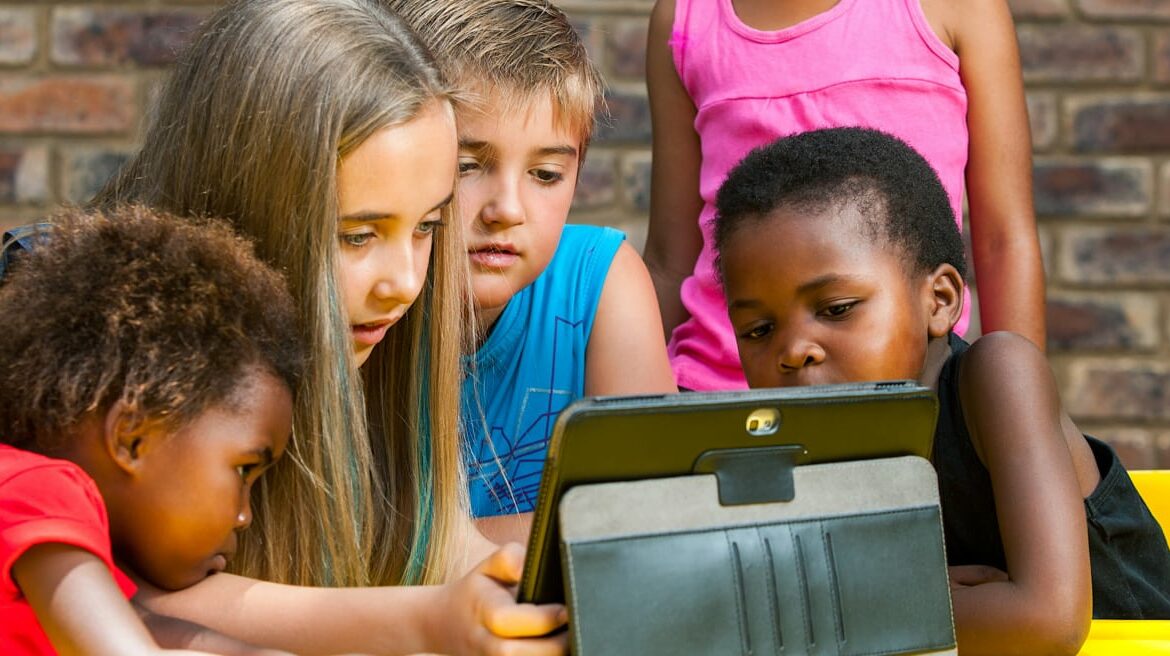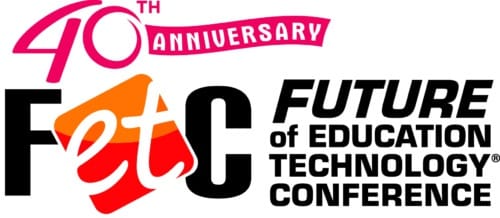A Q&A with FETC presenter Michele Haiken FETC presenter Michele Haiken is a middle school English teacher, adjunct professor in literacy, and an author with a passion for everything in education technology. At FETC, she’ll be presenting on the important topic of personalized reading, helping attendees to enhance their respective digital literacy toolboxes to support the diverse readers in their classrooms.
To give a preview of this topic, Haiken will present an Edchat Interactive webinar, Diverse Tools for Diverse Readers, on Tuesday, October 29, at 8 pm ET. She’ll use this time to address the needs of diverse learners, give insights on the accommodations that are available, and share some tools that can inspire readers.
In this brief Q&A, Haiken shares some of her thoughts on diverse readers, how we define them in a typical classroom, some gamification principles that enhance literacy instruction, and how to evaluate digital tools. Read on for an introduction to some of the valuable ideas you can pick up in her webinar and FETC session.
What are some of the different factors that define diverse readers in the classroom? In other words, in a given classroom, what are some of the differences between readers that contribute to their diversity?
We all have a cacophony of readers in our classrooms. Yes, we have English as a New Language students (ENLs) and students with learning differences, in addition to advanced readers, reluctant readers, and even struggling readers. We have readers who skim through a book and those who are solid readers but don’t care to read. And, once in a while, I might find a voracious reader who always has her head in a book.
Long gone are the “one size fits all” teaching approaches, and with such a diversity of readers in the classroom, educators must personalize and support these diverse readers. For our ENLs, asking them to read a text in a second language might be a struggle depending on their language proficiency. I have my ENL students read these texts in their home language. When I have a reading inquiry going on about a specific topic I allow for choices based on topics, reading levels, and interests. For example, for my 8th grade dystopian unit of study, students have choices between Animal Farm, Unwind, and The Giver. Each book ranges in types of societal controls and reading levels. Together as a class we look at the larger dystopian themes presented in the texts and students use their X-Ray reading abilities to draw connections among the themes, characterization, and more.
What are some of the principles of gamification that are most beneficial to learning, and especially to literacy?
Quest-based learning adventures (and gamification) is an approach to learning that connects meaningful gaming with content objectives to promote learning and deepen student understanding. Through gamification, you can transform literacy instruction into a game with creativity, collaboration and play, while still meeting Common Core State Standards and ISTE Standards for Students.
Exactly how you bring games and game playing into the classroom is really a matter of thinking creatively and playfully about what you already do. For example, you could tie assignments to point values and badges that students could then use to unlock privileges such as a homework pass or preferential seating. As with choice menus, students would choose which assignments to complete and when, but with the aim of collecting as many points as possible or a “literacy champion” selection of badges. Alternately, you could organize an overarching mission in which assignments are like a sequence of game levels. Students would need to successfully complete each assignment in order to “rank up” to the next and eventually complete all the required material.
When evaluating digital tools to support reading instruction, what are the key elements educators and administrators should be looking for? What are the “must-haves” with tech tools?
Technology has allowed teachers to diversify their teaching and provides leverage for all students to succeed. More important than the technology tools you use, however, is that you create meaningful classroom experiences to promote reading, critical thinking, and digital literacy.
Digital reading platforms like Actively Learn offer accessible text that you can use to build comprehension and conversations in the classroom. Actively Learn has a free version and a pro subscription for a fee. Actively Learn allows teachers to upload their own material and use within the platform. Customizing assignments with a digital platform leads to more effective and independent instruction that targets students’ strengths and weaknesses by giving support to students that need it, while omitting it for those who don’t. You can use Actively Learn and other reading platforms in a variety of ways to support diverse readers and build content knowledge from jigsaws, building background knowledge, “do nows,” and flipped learning.
The readers in our classrooms are individuals with unique needs and preferences. Technology allows teachers to offer learning experiences to support these diverse student learners. As Alabama Principal Danny Steele commented on Twitter, “It is good to know content. It is great to know pedagogy. It’s imperative to know the kids.”
Once teachers get to know their students, they can incorporate meaningful and thoughtful learning experiences for all learners.
Register here for the Edchat Interactive webinar, Diverse Tools for Diverse Readers
About
 Michele Haiken, Ed.D. is an educator and author with a passion for all things literacy and Ed Tech. She has taught middle school English for the past 20 years and is an adjunct professor in literacy in New York. She is the author of New Realms for Writing (ISTE, 2019), Personalized Learning (ISTE, 2018) and editor of Gamify Literacy (ISTE, 2017).
Michele Haiken, Ed.D. is an educator and author with a passion for all things literacy and Ed Tech. She has taught middle school English for the past 20 years and is an adjunct professor in literacy in New York. She is the author of New Realms for Writing (ISTE, 2019), Personalized Learning (ISTE, 2018) and editor of Gamify Literacy (ISTE, 2017).
Connect with her at @teachingfactor
The 40th anniversary Future of Education Technology Conference (FETC) will take place January 14-17, 2020 in Miami, Fla. Registration is now open at Future of Education Technology Conference (FETC)
Further Reading
- edCircuit – Emphasizing Learning Inside Technology-Infused Classrooms
- Learning Personalized – 6 Insights to Making Personalized Learning Happen
- Edutopia – 5 Free Video Games That Support English Language Learners



